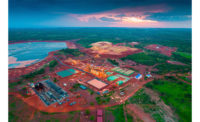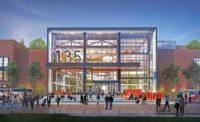In December, the firm was selected to design a new athletics complex at the University of Texas at San Antonio. The project includes separate 1,000-seat stadiums for soccer and track and field. In August, construction is slated to start on the $69-million expansion of Louisiana State University's Tiger Stadium, also designed by HKS.
The combined strategy paid off for HKS with revenue jumping from $34.45 million in 2010 to $45.56 million in 2011. The firm also started to rebuild its workforce. After losing more than a quarter of its staff firm-wide in the recession, it added 130 people in 2011.
Designed to Build Business
In the transportation sector, engineers face a mixed market. In Louisiana, the highway program has dropped off considerably following completion of several stimulus projects and other work related to recovery after Hurricane Katrina. Texas also continues to struggle with funding, but manages to keep work flowing. The $2.6-billion LBJ Express in Dallas, phase 2 of Manor Expressway US 290 in Austin and the IH610 project from IH 10 to US 290 in Houston rank among the major projects to break ground in 2011.
Mark Isaak, director of sales and strategy in transportation for Atkins, says alternative delivery and financing approaches on megaprojects are making a difference for design firms. In 2011, the company reported $102.96 million in revenue, up from $81 million in 2010.
"The single biggest factor in results for us this year has been [public-private partnerships] and design-build projects that moved forward," he says. Atkins is the general engineering consultant on Manor Expressway and the Grand Parkway project in Houston. It is also providing technical assistance during construction of LBJ Express.
Isaak sees a "steady diet of medium to large projects" delivered with design-build in the foreseeable future, but PPP work will be limited. "There's a burst of activity in Texas right now because only a certain amount of these projects are feasible. We're already starting to run through those. The PPP market is strong today, but that will pull back."
For more traditional work, Isaak expects designers to spend more time helping clients maximize existing infrastructure and facilities. "We hear all the time about how clients need to do more with less," he says. "They need to get more out of their existing assets and a lot of services will be geared toward that going forward."








